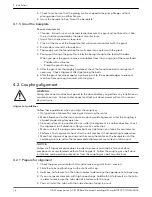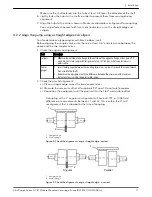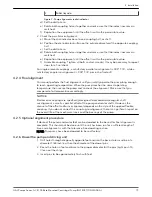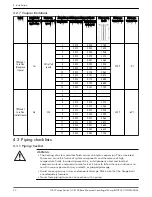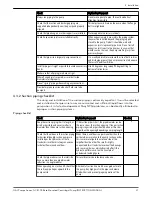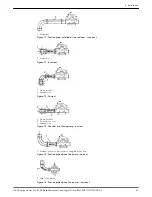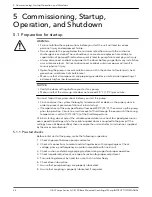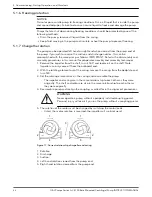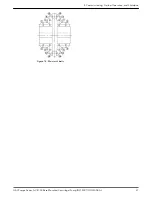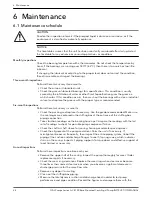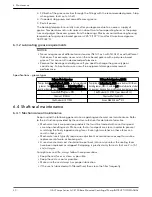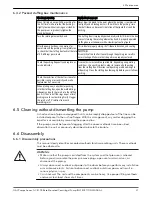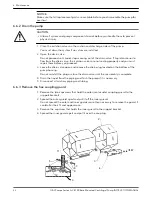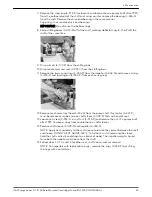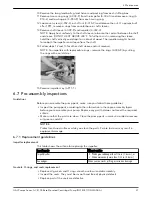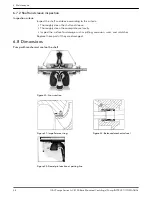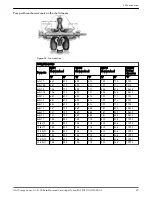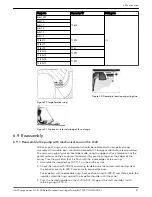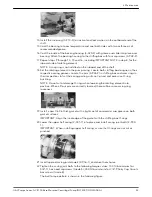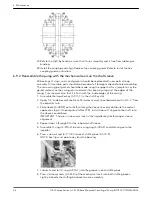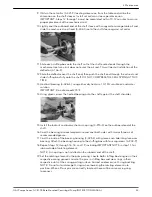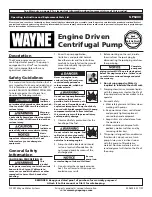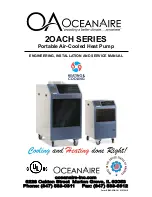
3. Fill both of the grease cavities through the fittings with the recommended grease. Stop
when grease leaks out at shaft.
4. If needed, stop pump and wipe off excess grease.
5. Restart pump.
The bearing temperature usually rises after you regrease due to an excess supply of
grease. Temperatures return to normal in about two to four operating hours as the pump
runs and purges the excess grease from the bearings. Maximum normal bearing housing
temperature for polyurea-based grease is 225°F (107°C) and for lithium-based grease
180°F (82°C).
6.3.2 Lubricating grease requirements
NOTICE:
• Never mix greases of different consistencies (NLGI 1 or 3 with NLGI 2) or with different
thickeners. For example, never mix a lithium-based grease with a polyurea-based
grease. This can result in decreased performance.
• Remove the bearings and old grease if you need to change the grease type or
consistency. Failure to do so can result in equipment damage or decreased
performance.
Specifications — grease types
Polyurea-based greases
Lithium-based greases, NLGI 2
Pumps built on or after Dec 1, 2014 use Polyurea-based
greases. See date code label and lubrication label on
pump or bearing frame indicating polyurea-base grease
Pumps built before Dec 1, 2014 were built with Lithium-
based greases, NLGI 2, and do not have lubrication label
on pump or bearing frame indicating pump grease type
ExxonMobil Polyrex
TM
EM
Shell Gadus
®
S2 V100 2 (was Alvania RL 2)
Chevron SRI NLGI 2
Chevron Multifak
®
EP 2
Shell Gadus
®
S5 T100 2
ExxonMobil Unirex
TM
N2
6.4 Shaft-seal maintenance
6.4.1 Mechanical seal maintenance
Keep in mind the following general rules regarding mechanical seal maintenance. Refer
to the instructions provided by the seal manufacturer for detailed information.
• Mechanical seals are precision products that must be treated with care. Use special
care when handling seals. Make sure that oil and parts are clean in order to prevent
scratching the finely lapped sealing faces. Even light scratches on these faces can
result in leaky seals.
• Mechanical seals typically require no adjustment or maintenance except for routine
replacement of worn or broken parts.
• A used mechanical seal should not be put back into service unless the sealing faces
have been replaced or relapped. Relapping is practical only for seals that are 2 in. (5.1
cm) or larger.
For optimum seal life, always follow these precautions:
• Keep the seal faces as clean as possible.
• Keep the seal as cool as possible.
• Make sure the seal always has proper lubrication.
• If the seal is lubricated with filtered fluid, then clean the filter frequently.
6 Maintenance
30
G&L Pumps Series A-C 8100 Base Mounted Centrifugal Pump INSTRUCTION MANUAL

